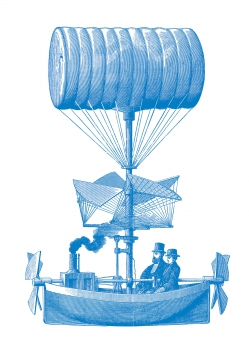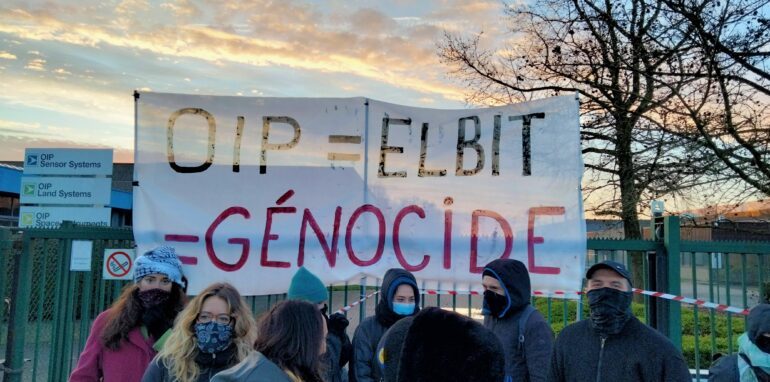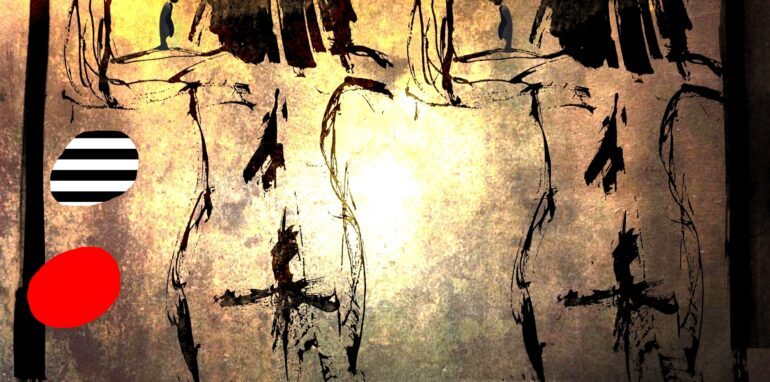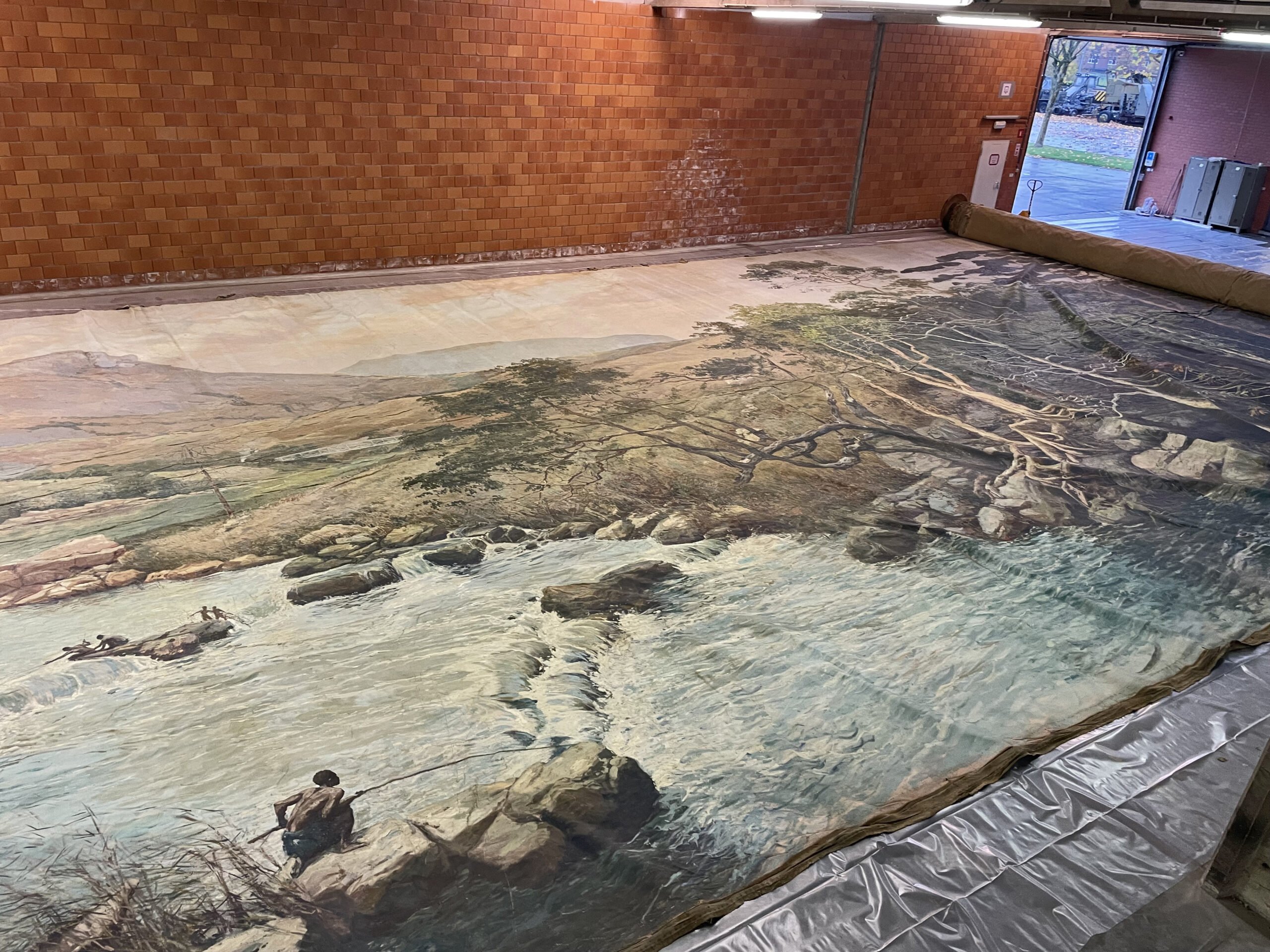Answer to the
question: what should the curriculum of a school in architecture look like?
Lecture for Architectura,
the student organization of ETH
Zürich, April 22 2015
Lieven De Cauter
[extraordinarius]
“Philosophy has only topic: everything.
And only one method: everything at one.”
(From ‘Introductions to the present, a crash course in modernity’, the
missing part of ‘Metamodernity for
beginners’).
0. [prologue] Welcome to posthistory!
Architects should
be at the level of their time (like all people but maybe architects a little
bit more, just a nudge). Hence, before I even can begin: what is our time? We are confronted with a Novum, something unseen and unheard of in human history: ‘Nature’,
the ecosystem, the biosphere, but also the stratosphere, is getting totally out
of balance by our own doing. I have called this around the year 2000 ‘the
permanent catastrophe’ and more recently ‘the Age of Disaster’. The add insult
to injury, the ongoing demographic explosion is a catastrophe in itself.This overpopulation is a daunting task
for architects: dwelling, infrastructure, transport, and all the rest of it, for
9 billion people, increasingly on the move (escaping draughts, floods, poverty,
civil war, or just for work, or even just for fun: on educational, political or
plain mass-tourism)!As I finalize this text, April 20, 700
people drown in the Mediterranean. And 400 more just a few days ago. Around 3500
died last year (maybe many more), 170.000 made it to Europe.
The anthropocene,
the geological age predominated by the human species, is spiraling out of hand.
Anthropogenic pollution is warming up Mother Earth. In terms of chaos theory:
tipping points make turbulences, we are in an age of tipping points, many
tipping points, so turbulences ahead. Serious turbulences. Once tipping points
are reached, ecological tipping points of course (a few degrés more can lead to
massive loss of biodiversity, if bees die out say bye bye to flowers and
fruits), but also other tipping points: the collapse of state that disintegrate
one by own and somber away in chaos and civil war… (Iraq, Syria, Lybia, Niger,
Soudan, Eastern Congo, Kenia, Jemen, the
region of the great lakes and on and on), once tipping points are reached, hell
breaks loose, mostly (for instance: a black out! [switch off the light, please.
Some candle at hand? Mobile phones? lighters?]).
In modernity, history
seemed an ascent to something wonderful (fulfillment of the promises of nature,
Kant called it:) Progress. Now we seem to be heading for break down, I call it
‘falling out of history’. Is it possible we are falling out of history? That is
a question that haunts my recent books. It is a new sort of posthistory: not
the one some sort of fulfillment of history (from Hegel, over Marx, Kojeve, and
Fukuyama), but as a relapse, a chaotic spell… Welcome to posthistory.
Posthistory: the
perpetual war on terror as permanent state of exception. Our states, societies and cities seem to disintegrate.
I have termed this ‘the implosion of the polis’, or more dramatically, in
cyberbaroque and steampunk style, ‘the relapse into the nature state’: all
sorts of disintegrations, chaos, anarchy, frictions, mass migrations, wars of
course, but mostly deteriorating in to forms of civil war, often with the help
of civil war engineering (a neocon specialty: Iraq).
So if we put all
this together we can make an outline, a robot photo as we call it, a composite
picture, of posthistory. 1: climate change as permanent disaster. 2.
Demographic explosion is a catastrophe in itself. 3. War on terror: the state
of exception becomes the rule. 4. Implosions of the polis: relapse into the
state of nature (civil war). 5. Posthistory as the age of realized science fiction:
smart cities and robot armies in the cyberpunk landscape of the New Middle Ages.
Welcome to posthistory!
Architecture
should be at the level this posthistory. My thesis is very clear and simple:
architectural education, as any education for that matter, your curriculum,
should be at the level of this immense challenge of the posthistorical dystopia
we are heading for with almost scientific certainty…
Corbu‘s famous
slogan (‘architecture or revolution!’) should be rephrased: ‘Urbanity or civil
war!’
1. Everything
is architecture (or the helmet of Hollein)
For Adolf Loos, as
is well known, very little was Architecture. One of the greatest writers of all
times on the topic (of architecture) was extremely rigid, even severe: graves,
triumphal arches, pure monuments were architecture, all the rest was ‘Bauen’,
building. And his severity was interesting. But I am afraid if we go into Loos…
My hypothesis is that Loos is misunderstood, even maybe by himself. Ornament is
crime. Matter cannot be disguised as something else. The Plumber is the hero of
modern architecture and the Bathroom its paradigm. All his oracles have proved
pretty fatal. The core of Brutalism that never seem to end. The unending
Brutalism, a sect that believes that 99% of humanity are wrong in not liking naked
concrete because they are analphabets in architecture and that they the 1% ‘iniated
ones’ are right. But as said, let‘s not go into that…:)
Hans Hollein wrote,
as is well known, that ‘everything is architecture’. And he was right: a lot is
architecture, a house is architecture, then also an airplane, but if an
airplane, or an ocean liner (besides the acropolis of course) then also a
helmet. The helmet of Hollein. It stay always be with me. And so should it with
you. So, all of the extension of our skin could be called architecture. That is
a lot. You could refine: architecture is our third skin, clothing is not
architecture, a helmet is not exactly clothing, it is a capsule, a carapace, and
hence architecture.
“The city is an armour plate, a military device, an
extension of our very skin” (to
paraphrase McLuhan in understanding media).The city as fourth skin, could then in its entirety be considered
architecture. And indeed it is architecture, not only its buildings, but also
its bridges, its roads, and even its parks (landscape architecture). But even
this broad idea of architecture, which I think we all share with Hollein
somehow, even if some of us would not call a helmet architecture, even this
idea of architecture should be expanded, or exploded. By expanding the role of
the architect. Or taking back some roles that were lost. But we will come back
to this…
Man, in short
should be redefined as architectural being. We are born in architecture, we
live in architecture, we die in architecture. Architecture is the medium of
man, his third skin. An education in architecture should be at the level of
this (re)definition of Man as an architectural being.
2. Para-architecture revisited (in theory)
To tackle this
task is not easy. Therefore: paper is patient. Ideas can develop in the
parallel world of drawings, models, renderings, scenario’s, etc. In short,
para-architecture. Para-architecture is a term that is dear to me. It is
simple: it is architecture that plays out in a parallel world. Why did I come
up with that concept? I try to reconstruct that. All para-architecture, I
think, is deep down paper architecture (even if it uses video, action research,
whatever), but not all paper architecture is para-architecture.
“The archipelago of
plugged in and secured capsular spaces increasingly produces a smooth sort of
hyper-architecture: themed, spectacular and illusionist. Hyper-architecture is
the product of the architect as the experience engineer within the experience
economy. Architecture as social engineering (modernism) has been replaced by
architecture as experience engineering or ‘imagineering’. In our world,
architecture tends to be either pure logistics or purely décor. Its
counterpart, formed by the enclaves of containment, comes in the form of
infra-architecture: slums, ghetto’s and camps. Infra-architecture, architecture
reduced to its most minimal function of logistics – architecture as survival
kit -, corresponds to the ‘infra-reality’ of extreme poverty, chaos and war, as
opposed to the hyper-architecture of glossy magazines, which corresponds to and
expresses our hyper-reality.
If most hotspots in
the archipelago could be called ‘heterotopia’, the black holes in the
ubiquitous periphery we can call ‘camp’. Indeed, the archipelago of secured and
connected capsules has its dark counterpart, the archipelago of camps: the
archipelago of order, wealth and security as opposed to the Gulag archipelago
of detention centres, prisons, labour camps, refugee camps, military camps,
secret prisons and outright concentration camps such as Guantánamo. The
archipelago of camps is administered by the archipelago of order. The camp is
the bio-political device which makes it possible to operate within the
treacherous terrain outside of the network of well-connected premium worlds.
Besides the proliferation of heterotopias that provide for normality in the
(atopic) network space – ‘places to be’ in the ‘space of flow’ – we see a
proliferation of camp-like situations.
Besides hyper- and
infra-architecture there might be an excluded third: let’s call it
para-architecture. Para-architecture is architecture that plays in a parallel
world. In an age dominated by the extremes of hyper-architecture and
infra-architecture, para-architecture might be a way to make architecture
again.
We believe that
para-architecture is a way to give architecture back its visionary power.
Para-architecture in contrast is only the small door through which the Messiah
could enter (but mostly doesn’t). Even if this sounds like messianic double
Dutch, it cannot be denied that within para-architecture (both the classical
and the more recent forms) there is a deep rooted strategy of deactivation,
non-participation. Well, interruption, suspension, revocation, discontinuity,
standstill, reversal, are all the attributes of the messianic. In other words:
para-architecture is a long shot. But in the face of infra-architecture and
hyper-architecture, what do we have to loose?”(From Meditations on razor wire. A plea for Para-architecture https://lirias.kuleuven.be/handle/123456789/272663)
Well, that is
quite a program… From Superstudio, Archizoom, Archigram, via Exodus of
Koolhaas, over Delirious New York to practices
like DAAR (Decolonizing Architecture residency)…, this tradition of
para-architecture should be cherished. Any good curriculum in architecture should
not only study but also practice this tradition of para-architecture. Make sure
that there is space and time for the study and practice of para-architecture.
For it is the architecture of scholé.
Of free time. It is the parallel time-space of utopia, heterotopia and the
works. Outside of the economic sphere (the real) and outside politics (the
symbolic order)… Imaginary, Imaginative anti-images, counter projects,
meditations, mediations, but as action tools. Exodus for instance, is the
kernel of the entire work of OMA. (See ‘The exodusmachine’ on this in Exit Utopia*.)
I end this section
with a note on the changing relationship between hyper- and infra-reality… The
end of shizo-capitalism: from hyper-reality vs. infra-reality to the merging of
those extremes. Morphing, mutant reality. The image of our age is that of a
sort of realized Cyberpunk landscape, the new middle ages, high tech barbarism.
(Welcome to posthistory…)
3. The architect as mediator: radical transdisciplinarity
(para-architecture in practice)
The new roles of
the architect… there is more between heaven and earth than star-architecture
can cover. Star architects are few and it is extremely though… So let’s look
for transdisciplinary alternative, para-architectural, even infra-architectural
(a hen house in a people’s garden, for urban farming for instance..). Let me sum
up some examples (google them later).
DAAR (Decolonizing
Architecture Art Residency) http://www.decolonizing.ps/site/
Campus in camps http://www.campusincamps.ps/
Forensic architecture http://www.forensic-architecture.org/
Stalker http://www.osservatorionomade.net/
AAA (Atelier
d’Architecture Autogérée) http://www.urbantactics.org/
And there are more: ROTOR, Wim Cuyvers, sure you know some other activist practices too.
The bottom-line of
all these examples: the architect as curator or part of an activist community. A
last example from my own neighborhood: ‘Parckfarm as concrete utopia’ (my
students were involved in it, I am a fellow traveler of the project). A community
park for urban farming, common production of food, common meals. This I would
or we should google and look into it
a bit deeper maybe… (Maybe just the photographs underneath the text): http://community.dewereldmorgen.be/blog/lievendecauter/2015/02/11/parckfarm-as-concrete-utopia
All the temporary
constructions you see on the photographs are built by architects in
collaboration with the local community and volunteers, even the henhouse. Under
the second bridge there was a dry toilet, by the activist architecture group ‘Collective
Disaster’. They wanted to call it the ‘Temple of Holy Shit’, but the local
community did not want it and they re-baptized it into ‘L’usine du tésor noir’
(the factory of the black treasure). So besides local production of food, reuse
of human waste for fertilizing that production. Short chains. (And with a sense
of (black) humor!) That is the future.
…By doing all this,
by taking up her/his role as mediator, as architectural or urban activist, as curator,
as part of a transdisciplinary team, a part of a local community, etc, the
architect returns in a sense to one of his/ her oldest and highest vocations:
to design utopias. Hippodamus was the godfather of architects and urbanists,
and he wrote a utopia, maybe the first in human history… I don‘t think that is
by accident. Do you? I don’t think so. But. It is also the danger of architects: they are utopians. Beware of visionary engineers,
particularly when they are serving the rich, the powers that be, the system.
4. Disclosures of the (urban) commons
Capitalism started
with the enclosure of the commons (From Morus to Marx), but these enclosures
are ongoing: the privatization of seeds (Monsanto!), the exploitation of the
Northpole, the exploitation of the Amazon forest, the privatisation of
knowledge (the Pharma industry, the universities as motors for spin offs in the
knowledge economy), the commodification, the economisation of everything, is
the ‘primitive accumulation’ (Marx) capitalism still feeds on today, more than
ever almost (Not sure if Marx was fully aware of this, the fabulous horrific
chapter on this original accumulation seems inconcluse on this point, it was
not his point in sketching five centuries of the bloody origins of capitalism).
The urban commons
are privatised by the real estate developers: it is the essence of
gentrification. The atmosphere that the commoners, the inhabitants of a quarter
produced, is sold to the rich and eaten away, and consumed, destroyed (for
these trendy quarters lose their character, city quarters become tourist zones
or worse…).
Today, architects
are at the cross roads of the ongoing battle over the privatisation of the
(urban) commons. (Redefining utopia: utopia is a radical response to the
enclosure of the commons. See on this for practice: almost all of the above
cited cases. For more theoretical musings, we, or you, might look into my commonplaces
on the commons: http://community.dewereldmorgen.be/blogs/lievendecauter/2013/10/14/common-places-preliminary-notes-spatial-commons ). By playing his role a mediator in urban activism
and the temporary architectures it needs, the architects can reinforce the
commons.
The commons can
also be disclosed by research. Towards an
Atlas of the commons is a series of masterthesisses that I have set up in Leuven,
but it could be done here too: all sort of practices of commoning, like
collective dwelling, urban activism, squatting, occupations, temporary
architecture, etc. should be mapped, documented, studied, analysed and
criticised.
(Here an nice
example, almost a fairy tale, to read one day, by a student of mine, Ranjani
Balasubrahmanian: http://community.dewereldmorgen.be/blog/lievendecauter/2015/02/21/indian-avatar-the-victory-of-the-first-dwellers )
Action research is
a way to do it: participatory observation, or rather observing
participation. In short, what we get here
is an expanded idea of architecture. Now, finally to
our real, our only question: how does all this affect architectural education
or: the curriculum?
5. On architectural education
What is the
consequence of the expanded idea of architecture, of this morphing or mutant
practice? Far reaching, I would suggest.
Descholing of the
school. Double Exodus. Back to Scholé.
Free time for study and experiment, safe havens for criticial thinking, but
also laboratoria of action research in the real world. Retreat and Break Out.
Nonlinear pedagogy.
Nonlinear
pedagogy is multi-transversal and emphasizes direct democracy and
self-organization of the students. Nothing needs, everything is allowed, but
the proposal should be better than what is on the table by the teacher. Nonlinear
pedagogy is transdisciplinary. Nonlinear pedagogy is transcultural (super
diversity! there is work to be done here). Nonlinear pedagogy is multilingual. Nonlinear
pedagogy is glocal: locally situated in the city, but also global: the
planetary scale is the right scale. Nonlinear pedagogy goes extra muros: public
education: blogs, culture houses, actions, lectures. Nonlinear pedagogy tries
to make cross overs between courses, interconnections. Nonlinear pedagogy loosens
the barriers between years: students teach each other (flight forward in
flexibility)? Nonlinear pedagogy is situationist pedagogy (‘critical tourism’).
Nonlinear pedagogy goes transmedia (social media in the first place: blogs).
A new role for the professor. The teacher as a
curator, the absent master, the master horizontal, transparent master, as
bottom-up slave driver? Nonhierarchical,
informal relations. We are all adults. (Only Pigs are more equal.) Non-hierarchical
relationships entail direct democracy. (Indignado communication signs during
classes and meetings in big groups, anyone active at anytime!)
School as heterotopia!
A space of otherness, heterotopia, as space outside and inbetween the public
(political) and private (economical) sphere, a space in which there is space
for almost everything (as everything is architecture).
Exercises in
globalization (ethnic, religious diversity in schools, living in mixed
neigboorhoods, projects with glocal communities, reading books like the Quran,
etc.)
Practices of communing:
cooking together, eating together, drinking together, dancing together, go on
trips together, etc. Sharing is caring.
But most of all: lessons in urgency! (I don’t think I
have to explain this. Do you? I dare to hope this was a lesson in urgency. [it
is also the name of the blog this lecture was published on, and many more of
the text referred to here: an open source, e-learning platform for and sometimes
by my students.)
CONCLUSIONS?
Expanding the idea
of architecture means expanding the idea of architectural education (and
therefore also the curriculum). Architects have this terrible profession that
it touches upon really everything: matter, technology, science, politics,
economy, sociology, anthropology, ecology, landscape (nature) and, of course,
aesthetics (architecture as form, as language), and so on, the list is never-ending.
It follows from the definition of man as an architectural animal.
[To sum up my
points: 0. Architectural
education should be at the measure of our (post)historical condition. 1. An education in
architecture should be at the level of this redefinition of Man as an
architectural being. 2. Para-architecture
should be practiced and studied 3. The architect
should be educated not (only) as author but (even more so) as mediator.
Architecture should go for radical transdiscplinarity. Investigate situated
knowledge. Do action research, architecture is action research (and that is
also but more than research by design). 4. In the struggle
for the commons the architect has a crucial role to play. Disclosure of the
urban commons by research, design and activist practices 5. A School for
architecture should keep scholé as
ideal, it should be a heterotopia, 6. Nonlinear
pedagogy 7. Exercises in globalization 8. Practices of
commoning 0.1 (all of it) Lessons
in urgency]
But …Do i think
traditional architecture is unimportant, passé, lost? Not at all. I was/am now
involved in a contest with OMA for the new Flemish radio and television
building in Brussels. Do I think it is important that our public media get a
fantastic building, yes. Of course. So great architecture in the narrow sense
of the word, is and remains core business.
To design a good building for a public radio and television for instance (to
stick to my example).
On the other hand:
as Koolhaas has proved in his fundamentals biennale in Venice, architecture is losing
its fundamental elements one by one: the wall, the window, the door, the hall,
the stair, the balcony, they all went our of the door, …Architecture as interface
seems to dematerialize, evaporate, into what? into junkspace or hyper-architecture. So there are problems… And also on these problems of the fate, the Seinsgeschick almost, of architecture
today, a education of architecture should meditate.
Also, while we are
at it, I happen to be also an art historian. And after many walks and talks with
my students over the years (I teach to architecture students since almost 20
years), I realized again and again that there knowledge and appreciation for
traditional architecture is weak… To make a long story short: all the
architecture before Mies and Corbu is not old rubbish. Learn its forms, its
language. Architecture is a medium, the medium of man, therefore it is like a language (much more than a
helmet, it is an aquarium and we are the fish). When you walk try to date all
the buildings you pass. A nice game and a good exercise. Mies and Corbu did
know their classics and their craft. Know the canon by heart, and know also the
commonplace architecture, the traditional architecture, cherish it… How to cram
this in our overfull curriculum is to be seen. But it is elementary, Watson.
…Curricula will
not save the world. And institutions cannot save you, and I believe that you
cannot really redeem institutions (keep always an inner distance towards
institutions, my deep almost instinctive advice (device) would be: we need
them, but they should not eat us).
But, in any case,
we have to become aware of the predicament we are in. You and your children
will be more in it than me. (My daughters are not aware, or aware but not fully
awake). Awakening, staying awake and
look the dark of night in the eye, is difficult, scary stuff… . Look our ugly
world in the eye, our dystopian posthistory (that I evoked all too briefly here,
when I started this overlong lecture). We have to think and act fast to avoid
the worst case scenarios. Architectural students should, like all of us, but
maybe a little bit more, be prepared for this daunting task.
[Thank
you.]



















